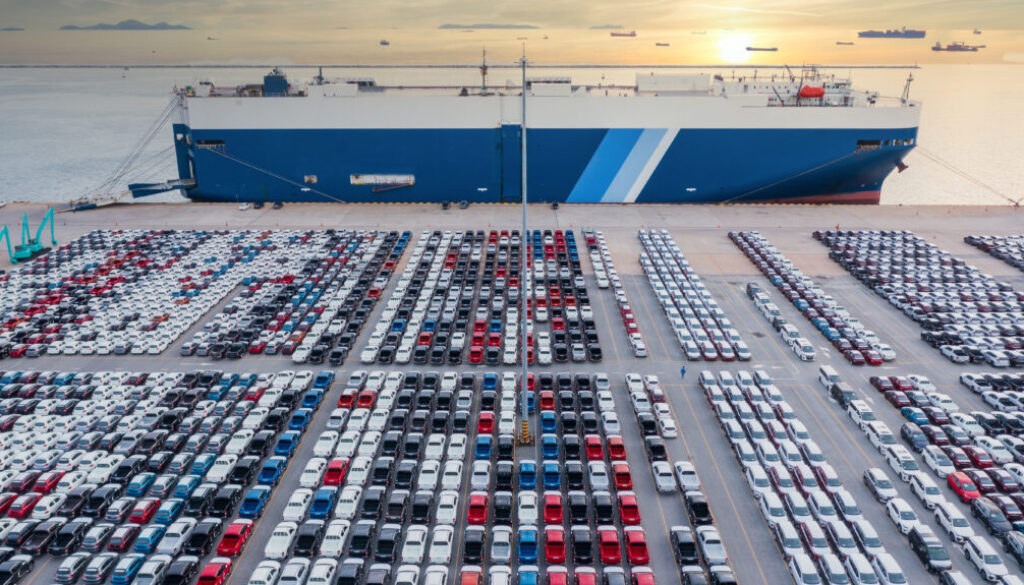Operations of the ferry between El Salvador and Costa Rica are set to begin
Table of Contents
Contact the Central American Group to invest in El Salvador by locating a manufacturing facility in one of the CAG free zones.
The ferry between El Salvador and Costa Rica will begin operations on August 10, 2023, as confirmed recently by Blue Wave Corporation, the company that will operate the new maritime transport service.
The ferry between El Salvador and Costa Rica will begin operations on August 10, 2023, as confirmed recently by Blue Wave Corporation, the company that will operate the new maritime transport service.
During the month of July, authorities from the two countries reported that, after ten years of preparations, the route between the ports of La Unión in El Salvador and Caldera, in Costa Rica, utilizing the ferry, would finally start operating in August.
“To enter into service, you must utilize a particular kind of ship. It just so happens that we had one operating in a Mediterranean port that meets the required characteristics and technical requirements suitable for an El Salvador to Cosa Rica route. This is the case because the tides and currents are unique but similar in the two ports,” said Michael Volks, CEO of Blue Wave Corporation.
“There is no ferry industry. It is a completely new mode of transportation that requires many details that must be addressed and worked out to be ready for when the ferry arrives; that’s why the project has been delayed,” explained Volks.
According to the executive, the company will have its administrative offices in Panama and the headquarters of operations in the port of La Unión.
Rates for the ferry between El Salvador and Costa Rica
Blue Wave Corporation indicated that there will be two departures from the port of La Unión to Puerto Caldera in Costa Rica. These will take place on Mondays and Thursdays. If there is demand, they will add a third weekly round trip. The voyage is expected to last 24 hours; the company estimates that the current journey by road takes around five days. The charges will be $1,145 (low category) for trucks of lesser weight and length and $1,360 for larger units (high category).
Regarding the charges, Raúl Alfaro, representative of the Salvadoran Association of International Cargo Carriers (ASTIC), expressed his doubts since, as they understand, the $1,360 charge will apply to 40-foot units. Still, they handle 48-foot and 53-foot containers, so they are unsure how much they will charge. Currently, freight to Costa Rica costs between $1,400 and $1,500. “If I get on the ferry, I will be charged $800 for the land portion of the trip (from San Salvador to the port of La Unión and from the Caldera port to San José). That means the freight will increase for the exporter,” Alfaro estimated.
With this increase, the total freight (maritime plus land) would cost approximately $2,160, according to the company’s estimates for the difference.
For ASTIC, it will also be necessary to consider the time it will take to get to the port of La Unión and the hours it will take to disembark from Puerto Caldera, a saturated port. Regarding this point, the ferry operating company said that the dock planned for the ferry is not the problem, but the entrance through the channel and the availability of the pilot who must assist with the docking. The concessionaire will help “define the ideal docking windows for the operation.”
Alfaro estimates that due to these situations, the cargo that goes by ferry will arrive in around three days versus the four days it takes by road. “The current problem is delays at the borders,” he said.
We are not opposed as a transport sector,” Alfaro insisted. However, he criticized that the income that previously went to national transport companies will now go to a foreign company. ASTIC estimates that for each trip they make via the ferry between El Salvador and Costa Rica, the domestic cargo transport sector will lose $600.
El Salvador’s Autonomous Executive Port Commission (CEPA) began talking about a project for a ferry between El Salvador and Costa Rica in 2013 when Alberto Arene chaired this public company. The idea was to connect the port of La Unión with Puerto Corinto in Nicaragua. That year, the extinct Maritime Port Authority (AMP) approved the first list of rates for the ferry. Over time, several companies showed interest in offering the service, but the project did not prosper. Therefore, CEPA began talks with the Costa Rican authorities.
Ferry operations will benefit both countries
It is expected that the ferry between El Salvador and Costa Rica will result in the following benefits:
Improved Connectivity: A ferry between the two countries would enhance transportation multimodal connectivity, providing an alternative travel option to move cargo between El Salvador and Costa Rica without using land routes.
Trade and Commerce: The ferry service could facilitate the movement of goods and products between the two countries, potentially promoting bilateral trade and economic cooperation.
Time and Cost Savings: For shippers, a ferry service could save time compared to traveling overland, It could be a more cost-effective option for those who prefer not to drive long distances.
Environmental Impact: Depending on the efficiency and energy sources of the ferry between El Salvador and Costa Rica, it could be a more environmentally friendly mode of transportation than shipping by ground.
Redundancy and Resilience: Establishing a ferry service provides an additional transportation option, adding redundancy to the overall transportation network and improving regional resilience against disruptions caused by natural disasters or other emergencies.
It’s important to note that the actual benefits would depend on various factors, including the frequency and reliability of the ferry service, its capacity, safety measures, environmental considerations, and the level of interest and demand from travelers and businesses in both countries.
Contact Us
Please use this form to contact us and we will respond as soon as possible:





